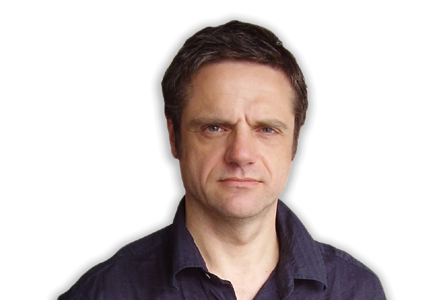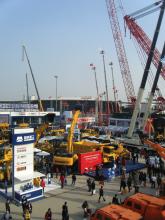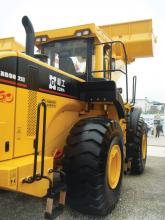With the dust now settled after the INTERMAT 2012 exhibition, it is clear that this event proved a success. For INTERMAT 2012, attendance figures grew throughout the week, with many firms reporting very busy booths. Of note is the fact that INTERMAT received a high percentage of international visitors, with over 34% of attendees coming from countries other than France. Attracting some 200,000 visitors in all, 145,082 were identified as proper trade visitors and this represented an increase of 15.8% over the

With the dust now settled after the 242 INTERMAT 2012 exhibition, it is clear that this event proved a success. For INTERMAT 2012, attendance figures grew throughout the week, with many firms reporting very busy booths. Of note is the fact that INTERMAT received a high percentage of international visitors, with over 34% of attendees coming from countries other than France. Attracting some 200,000 visitors in all, 145,082 were identified as proper trade visitors and this represented an increase of 15.8% over the 2009 event. Meanwhile of the 1,350 exhibitors, 67% were firms from outside of France, further highlighting the international flavour of the exhibition. Asian visitors were noticeable by their presence, although the exhibition also attracted visitors from countries in North and West Africa (many of which have historical links with France), as well as Eastern Europe.
The strength of this exhibition has underlined corporate results from major manufacturers revealing the resurgence of demand in the construction, extraction and equipment rental industries. Recent financial results from various manufacturers reveal a return to high profitability levels on top of strong turnover.
The economic malaise engulfing parts of Western Europe is at odds with the growth being seen in other parts of the world. Even the US, which was first to plunge into recession in 2008, is seeing a reviving construction sector, while sales in Brazil, Russia and Latin America are also very healthy indeed. The widely used term BRIC, taken to mean Brazil, Russia, India and China, has now been modified. At INTERMAT some firms referred to the BRICS nations, including those previously mentioned countries and adding South Africa. Others even referred to BRICST or BRIICST, adding Turkey and Indonesia to those countries seeing healthy growth.
China’s growth rate may not be as high as it was this time 12 months ago, but sales in the country are still high indeed and tempting various global manufacturers to continue investing in developing factories to supply this market. The European market is still in recovery mode but some areas, such as the Balkans, are benefiting from infrastructure investment. Just how long it will be before Western Europe recovers properly from its problems remains to be seen. It is debatable whether Turkey’s current healthy growth would have occurred had the country already joined the EC. Based on purely economic performance, the EC need Turkey at present rather more than Turkey needs the EC.
Looking further afield, there is sufficient business worldwide for international players to benefit. The Chinese market may have cooled and may not be growing at the same phenomenal rate as before, but INTERMAT 2012 spelled loud and clear that global demand for construction machinery is healthy.
The strength of this exhibition has underlined corporate results from major manufacturers revealing the resurgence of demand in the construction, extraction and equipment rental industries. Recent financial results from various manufacturers reveal a return to high profitability levels on top of strong turnover.
The economic malaise engulfing parts of Western Europe is at odds with the growth being seen in other parts of the world. Even the US, which was first to plunge into recession in 2008, is seeing a reviving construction sector, while sales in Brazil, Russia and Latin America are also very healthy indeed. The widely used term BRIC, taken to mean Brazil, Russia, India and China, has now been modified. At INTERMAT some firms referred to the BRICS nations, including those previously mentioned countries and adding South Africa. Others even referred to BRICST or BRIICST, adding Turkey and Indonesia to those countries seeing healthy growth.
China’s growth rate may not be as high as it was this time 12 months ago, but sales in the country are still high indeed and tempting various global manufacturers to continue investing in developing factories to supply this market. The European market is still in recovery mode but some areas, such as the Balkans, are benefiting from infrastructure investment. Just how long it will be before Western Europe recovers properly from its problems remains to be seen. It is debatable whether Turkey’s current healthy growth would have occurred had the country already joined the EC. Based on purely economic performance, the EC need Turkey at present rather more than Turkey needs the EC.
Looking further afield, there is sufficient business worldwide for international players to benefit. The Chinese market may have cooled and may not be growing at the same phenomenal rate as before, but INTERMAT 2012 spelled loud and clear that global demand for construction machinery is healthy.






